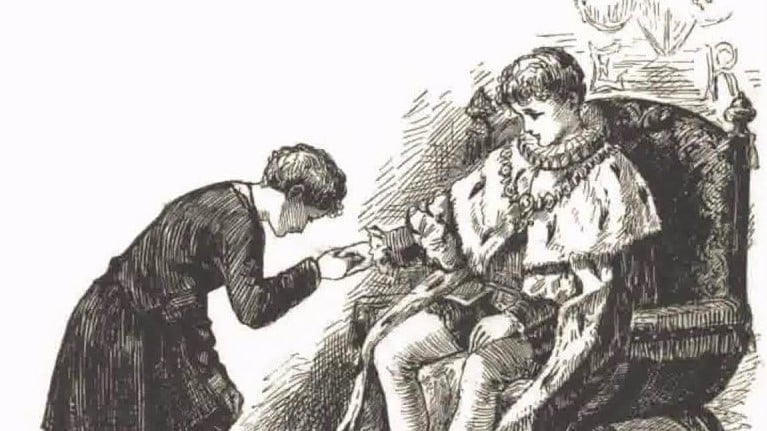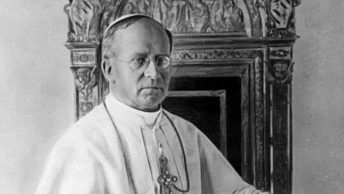The Prince and the Pauper is a novel by Mark Twain. It was originally published in 1881 in Canada, a year before its American debut. Set in 1547, it told the story of two English boys, a pauper named Tom who lived with an abusive father and Prince Edward, son of King Henry VIII. Through a series of plot manipulations, the boys switch identities for a temporary period of time. This literary device has serious allegorical overtones and has been a standard in literature ever since.
How surprising it is that the respective historical legacies of such disparate figures, such as Niccolo Machiavelli and Saul Alinsky have come to be intertwined in an intergenerational relationship that has had lasting consequences for American society. Just look what their acolytes in the Democratic Party have done to the United States in the person of Barack Obama. One need only have heard all or part of the opening Democratic radical debates to understand the clash of opposites.
Machiavelli was born in 1469. According to historian Jacques Barzun, even his name evokes visions of fiendish conduct. It has evolved to mean a cynical approach to government. This disdain revolves around his seminal work, The Prince, written in 1513.
Sixteenth century Florence was the cultural hub of the Italian peninsula, while Italy was a miasma of violence-ridden principalities where the people lived in constant fear and trembling. Assassinations, murders, and pillaging were daily occurrences. Machiavelli thought it was time for a new prince, who would establish peace and order.
Machiavelli was disturbed because most people lived according to the immorality of the day, even though they espoused Christian principles. Since the Italians of his day were morally weak, cowards, or poor, traditional rules had to be altered. According to Arthur Hippler, in the Wanderer, Machiavelli was the first Western thinker to promote the idea that moral evil is necessary for political good or as we paraphrase it the ends justify the means!
It has been almost five centuries since Machiavelli’s death in 1527. According to Barzun, Machiavelli’s legacy has lived on in the minds and hearts of scholars and deep thinkers, such as John Adams, philosophers, Charles Montesquieu, and David Hume, as well as Russian novelist Fyodor Dostoevsky. They all believed that the state should be neutral on moral issues. It is obvious that his spirit has deeply influenced the minds of many current American leaders, who employ the same antinomian rationale that has led the Supreme Court to render its historic decisions on abortion and homosexual rights that tore at the fabric of American civilization.
One such Machiavellian descendent was social reformer, Saul Alinsky. Born in Chicago, Illinois on January 30, 1909, Alinsky received his education in Chicago, both in the classroom and on its mean streets. He did graduate work in Criminology, which brought him in contact with the Capone Gang and later Joliet State Prison, where he studied prison life. Twice divorced, Alinsky died suddenly in Carmel, California on June 12, 1972, at the age of 63.
But his impact on American politics and culture has survived many years after his demise. Alinsky’s main importance was that he adapted Machiavellian tactics to his own brand of social justice. He was a superb social organizer, who believed in the power of numbers. Grass roots organization and community organizers were the open door through which he hoped to accumulate power for his disciples.
Like his Italian mentor, Alinsky was not a utopian visionary. He believed that the organizer should be a neutral agent, a kind of ideological agnostic, seeking no particular outcome and advancing no philosophy, other the gaining of power. Like his forbear in evil, Alinsky lost little sleep over doing dark deeds for the good of the have-nots. To him, ethical standards had to be elastic enough to stretch with the times. Unlike Machiavelli, Alinsky did not want power for the rich and the well connected. His goal was to turn Machiavelli’s Prince on his royal head and usurp power for the Paupers and the downtrodden, thus upending the historical way that life worked.
But Alinsky was not a doctrinaire cultural Marxist. He was more concerned with strategy. In his books Reveille for Radicals and Rules for Radicals he created an amalgamation of ideas, adapted from the dusty pages of Marxist, Socialist, anarchists even Fascist texts. In essence, his thinking mirrored that of the Philosophes of the French Revolution in their deep abiding contempt for Christianity, the business world, private property, and the traditional American political process. It is not surprising that Tom Paine, the voice of the revolution was one of his heroes.
Alinsky discarded the traditional rules of fair play because he believed the playing field had been distorted against the poor and the disenfranchised. Take no prisoners was his motto. He stressed a liberal social gospel philosophy that played on people’s guilt-ridden consciences over the sins of the past, especially slavery. He promoted a People’s Revolution in the name of social justice.
Alinsky was a self-proclaimed radical, who used sociology as a guise for his revolutionary activities. He was the ultimate class warrior who pitted the wealthy against the poor and in doing so he enlisted the support of clergy from many different religious denominations, especially Catholic priests with a strong urban social mission.
Alinsky’s most significant book was Rules for Radicals. In this 1971 book, Alinsky inverted Machiavelli’s teaching. The author of The Prince wrote for the wealthy princes of Medieval Europe. Machiavelli taught them how to hold and maintain their power. Alinsky adopted Machiavellian principles to be used by the poor for the subversion of the rich and powerful. He taught the have-nots how they could seize power away from their oppressors in business, politics, and religion.
With Rules as a handbook, Alinsky’s classes and workshops became a breeding ground for profession activists and revolutionaries among the poor. He created training centers for agitators, rent strikers and street demonstrations. His handiwork was clearly visible in the Chicago riots that accompanied the Democratic National Convention in 1968. His legacy left thousands in its wake, a deep bitterness and racial division.
Like so many liberals, Alinsky had no special love for the poor. They served only as the vehicle for his social activism. He condemned those who made a fetish of their love for the poor. To him, they were as dangerous and as guilty as other dogmatists. He became adept at disrupting the social and political activities of his enemies. His most important rule was to make the enemy live up to their own rule book. The teachings of Alinsky believed that this was the Achilles heel of any conservative organization because they can no more live up to their own rules than the Christian church can live up to Christianity.
Alinsky utilized the potent fact of the unavoidable contradiction in most public human behavior: Do what I say, not as I do. To him it was the albatross around the neck that has weighed down so many public figures who try to do the right thing but invariably succumb to the darker side of their human nature. Machiavelli also recognized this undeniable fact in human behavior. But his ideological heir wielded it like a powerful weapon because if the average American hates one thing, it is hypocrisy.
After working with the poor, Alinsky took his principles of pragmatic power to the middle class, because like Machiavelli, Alinsky realized that he should work where the power and money was. In his secular mindset, Alinsky thought that the middle class, those earning $14,000 or more, were the most alienated in the country.
As a result, he chided activists, such as the Students for Democratic Action, who condemned the materialism and decadence of their parents. Like Machiavelli, Alinsky was a realist who believed radicals must begin from where we are if we are to build power for change. Practical radicals will often have to put aside their principles for the good of the revolution. If they had to stifle their overt hatred of their middle-class roots, for the sake revolutionary change, then that’s what they had to do.
One of his early converts from the middle class was a former Goldwater Republican from Park Ridge Illinois, Hillary Rodham. Alinsky saw great promise in the bespectacled college student from Wellesley College. The future Mrs. Bill Clinton thought enough of Alinsky to write her senior thesis on his ideas and strategies, after working for him the previous summer. Unfortunately, the voting public will never know what she wrote. According to the book, Hell to Pay, by Barbara Olson, a passenger on American Flight #77 that was crashed into the Pentagon on 9/11, as soon as Bill Clinton became president, Hillary’s thesis was put under lock and key at Wellesley.
In her 2003 best seller, Living History, Senator Clinton briefly acknowledges her intellectual debt to Alinsky. She took great pains to point out that she disagreed with his idea that one had to work from outside the establishment. He thought that real reform (subversion) had to come from working inside an organization.
Alinsky could have had no better disciple than Barack Obama, who from his perch in the White House put himself above all rules of law, both moral and judicial. His eight years in the presidency facilitated Alinsky’s Rules and Principles in health care, gun control, education and religion.
Obama did his best to instill the inherent principles of societal destruction found in the Cloward-Piven Strategy, named after two Columbia University professors, Richard A. Cloward and Frances Fox Piven whose intent is to purposely collapse the U.S. economy with huge deficits, an uncontrollable nation debt and a welfare bursting with millions of new welfare recipients, immigrants and the mentally ill, essentially turning the United States into a pauper nation, at the mercy of its creditors and foreign enemies. One need only look at our Southern border and classrooms in California to see their impact.
While both Machiavelli and Alinsky might have had all the best intentions in the world, it is a truism that once power belongs to the Machiavellian, his good intentions become identical with his own personal views. According to philosopher, Leo Strauss’ classic, Thoughts on Machiavelli, the Florentine was essentially a teacher of evil. This epithet should also apply to Alinsky. All Americans should be aware of what these teachers of evil taught and to whom they taught it. Consequently, his ends justify whatever means he chooses to inflict on his subjects. All rules then become diabolical. It is no surprise then that in his introduction to Rules for Radicals, he dedicated it to the world’s first radical, who rebelled against the establishment and did so effectively that he at least won his own kingdom. Who was this? Nor Washington, or Lincoln but, Lucifer who rules in Hell.








